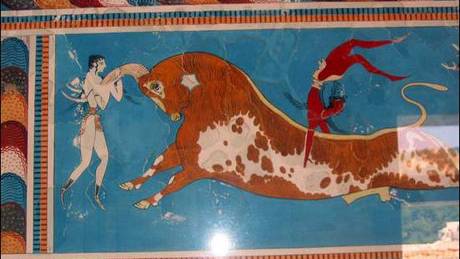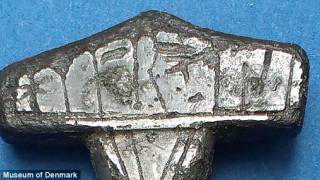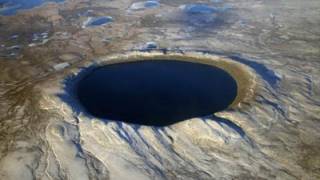Layers of mystery - Archaeologists look to the earth for Minoan fate
Source: telegram.com
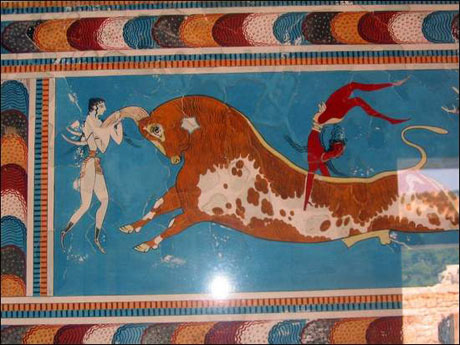
They created extraordinary artifacts for hundreds of years, revealing an aesthetic sensibility that influences Western civilization to this day. Then they simply disappeared.
Scholars are seeking answers to one of the great mysteries of the ancient world: What happened to the Minoans of Crete, who controlled a thriving Mediterranean trade network from around 2,200-1,450 BC?
Now NOVA senior science editor Evan Hadingham reports on new evidence that a massive tsunami struck the Bronze Age society 3,500 years ago, destabilizing the culture to such a degree that social chaos brought about its ultimate destruction.
As part of Massachusetts Archaeology Month, Mr. Hadingham spoke on the topic Oct. 17 at Shrewsbury Public Library.
Named after Minos, the mythical king of Crete, the Minoan people were part of a prosperous culture known for its successful sea trade, intricate palaces and fine art.
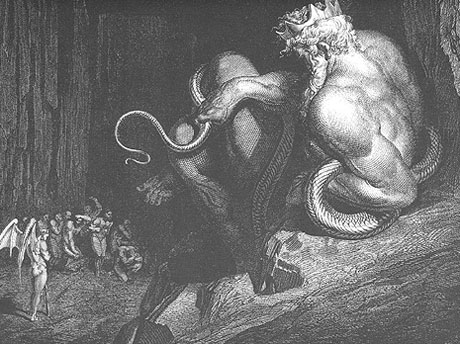
Minos by William Blake
Mr. Hadingham said the palace ruins of Knossos, first excavated by British archaeologist Sir Arthur Evans in March 1900, provide the most stunning example of Minoan handiwork.
“It was an enormous structure, five stories high, decorated with frescoes, ancient statuettes, a throne room, a central courtyard where ceremonies probably took place, and even flushing toilets,” he explained.
At the time of its discovery, he said, the palace created a sensation, revealing an entire lost civilization that existed before the classical Greeks.
While archaeologists have theorized that a volcanic explosion on the island of Thera, 70 miles north of Crete, was responsible for the Minoan downfall, it wasn’t until recently that evidence of a massive tsunami, brought on by the eruption, was linked to the mystery.
Mr. Hadingham described scientific findings at Palaikastro, on the northeast tip of Crete, as instrumental to this discovery.
During a recent dig, a team working under Montreal-born scientist Sandy MacGillivray found volcanic ash and strange gravel deposits that looked as if “they had been washed into the site by a violent flood,” Mr. Hadingham said.
While the ash’s composition was identical to that found on the island of Thera, there was no river or stream near Palaikastro to deposit the gravel.
“It must have been swept in from the ocean,” he explained.
More intriguing was a stone building whose wall had been torn off and was missing along “the same side that faced the sea, which was a quarter of a mile away,” Mr. Hadingham said.
But the most compelling evidence of a monster tsunami came from a nearby beach.
“In the cliff side overlooking the sea was a bizarre layer of broken pottery, gray ash, cattle bones, seashells, animal teeth and rocks that looked as if they’d been smashed with a hammer and then sifted together,” he said.
“Carbon dating determined that the age of the cattle bones was the same as the Thera eruption,” Mr. Hadingham continued. “It was clear that after the ash from the Thera volcano had dusted the town, a gigantic tsunami hit Palaikastro Bay.”
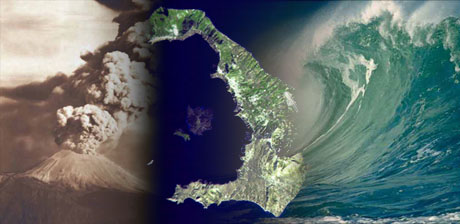
Mr. Hadingham described the tidal wave as “terrifyingly destructive,” perhaps larger than the Indian Ocean tsunami that hit Banda Aceh in 2004.
UCLA scientist Costas Synolakis, whose lab pioneered the computer model used by the Pacific Tsunami Warning Center in Hawaii, was invited to join Mr. Hadingham and Mr. MacGillivray on Palaikastro in 2006 during a NOVA film shoot.
“The team found another layer of possible tsunami debris at 90 feet above sea level,” explained Mr. Hadingham. “Professor Synolakis’ revised computer model now suggests that the wave generated by the Thera eruption was 10 times larger, wider, longer than originally estimated. When it hit Palaikastro, it may have been around 15 meters high.”
Despite such massive destruction, a tsunami only partially explains the disappearance of the Minoans.
Dated artifacts prove conclusively that the ancient culture survived for at least a generation or two after the Thera eruption.
“And the palace at Knossos, an 11-acre complex, was far too inland to be affected by the wave,” Mr. Hadingham said.
He theorizes that what happened next was a society struggling with the devastating loss of hundreds or thousands of its own people, shaken to its core and looking for answers.
Mr. Hadingham described an intricate ivory sculpture of a male figure, “a stunning masterwork of Minoan art,” that had been reconstructed from hundreds of fragments found outside a burned shrine in Palaikastro.
“Because of the exotic material and the exquisite craftsmanship, the statue perhaps represented a deity or cult figure,” he explained.
“Careful study of the fire-damaged legs of the sculpture suggests they had been tossed into the shrine while it was a raging inferno, blazing at temperatures of around 1,600 degrees Fahrenheit,” Mr. Hadingham continued.
“It seems likely that the fire was deliberately stoked, the figure smashed against the wall and then tossed into the fire. The heat caused the shrine to explode like a bomb, sending the walls tumbling outward.”
Some archaeologists believe that a religious crisis after the tsunami may have led to an Egyptian-influenced cult-like worship.
“Maybe the Egyptians sent help to the devastated island and influenced a change in religious beliefs,” he said. “The fiery destruction of Palaikastro and other Minoan sites may have been a reaction by the locals rejecting the new cult, or some other kind of social upheaval.”
“They are losing their values, and this is a reaction against it. The culture is shattered, and eventually the neighboring Myceneans from mainland Greece exploit this weakness and take over,” he continued. “Their arrival marks the end of this first great European civilization.”
Article from: http://www.telegram.com/article/20071028/NEWS/710280766/1008/NEWS02
